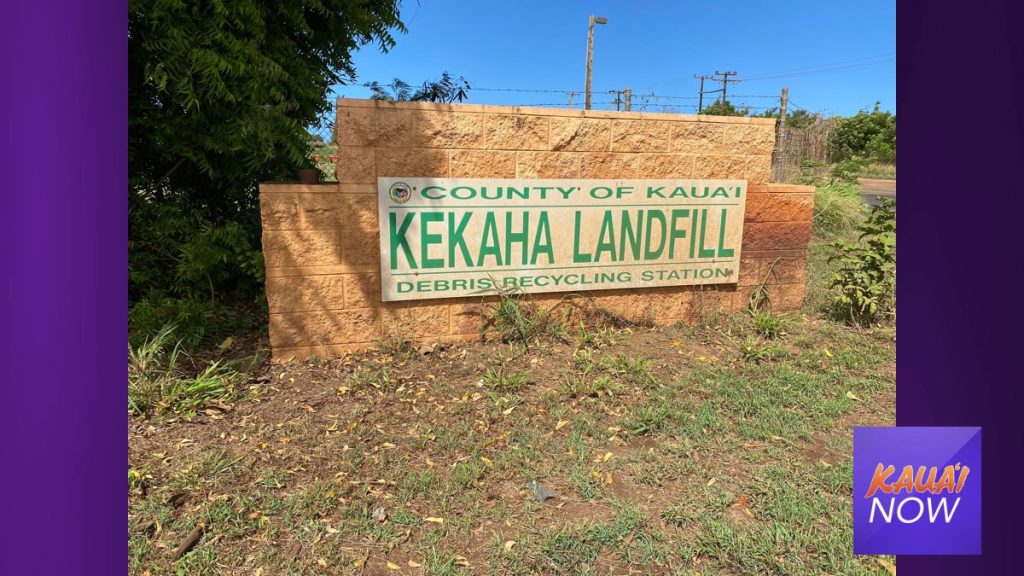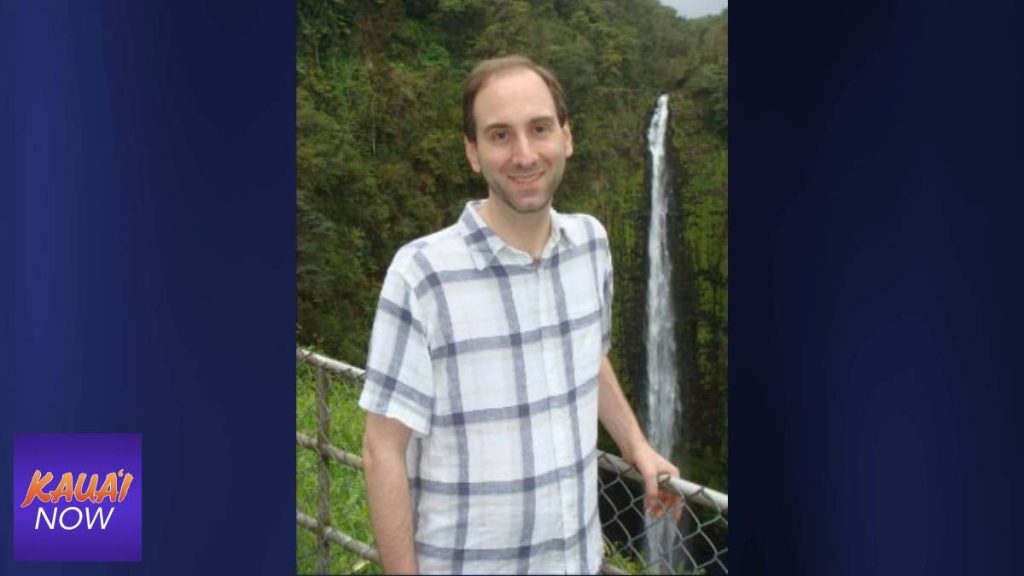Kaua‘i activists talk trash, recyclables, as island’s only landfill maxes out
It’s likely most people are not preoccupied by their garbage. But on Kaua‘i, folks may have no choice but to talk trash. The island’s only landfill is running out of space for the 500,000 pounds of solid waste it receives each day.
At current rates, the landfill, located in Kekaha on Kaua‘i’s West Side, will reach maximum capacity by January 2027 – just five years from now. A proposed vertical expansion would push that milestone to mid-2030.
Newly-reelected Mayor Derek Kawakami, during his Dec. 1 inauguration, labeled the challenge his administration’s “first and foremost” priority.
“Our landfill is living on borrowed time,” he told the crowd at Kaua‘i War Memorial Convention Hall in Līhuʻe. “We will be working together with our solid waste team, community members and stakeholders to site a new landfill. This is a monumental undertaking, but we are up to the task. We have no time to waste.”
Some of those community members discussed possible solutions during the virtual Kaua‘i Climate Action Forum held Wednesday night.
The meeting was the latest in a regularly-scheduled series organized by local environmental groups Zero Waste Kaua‘i, Kaua‘i Climate Action Coalition and Surfrider Kaua‘i. Guest speakers included Pennsylvania and Washington, D.C.-based energy activist Mike Ewall and “Dump Doctor” John Harder, who served as Kaua‘i county’s first-ever solid waste coordinator in the late 1980s and early ’90s.
Ewall founded and directs the national Energy Justice Network, which puts landfills — alongside coal and gas power plants, nuclear power plants, incinerators, ethanol plants and medical waste facilities — on its list of opposed industries.
But Ewall believes a new landfill, which will likely be sited next to the current landfill, is Kaua‘i’s best option.
“No one likes landfills. No one here, especially me, is saying landfills are good,” he said. “But we know that they’re less harmful than burning [waste] first and putting ash in landfills.”
Ewall was referring to so-called “waste-to-energy” infrastructure floated by County policymakers in the past. The process, which produces electricity through the burning of solid waste, is undoubtedly controversial: Opponents slammed the method as inefficient and polluting, when it cropped up in Kaua‘i’s latest Integrated Solid Waste Management Plan.
Some county officials also are not fans of the process. County Councilmember Luke Evslin said he was “obviously … incredibly skeptical” of waste-to-energy when voting to adopt the Integrated Solid Waste Management Plan in December 2021.
Ewall himself eschews the term waste-to-energy, which he says is scientifically invalid.
“No one turns matter into energy without a nuclear reaction,” he said Wednesday night. “That’s not what they do with trash incinerators.”
The ash created by these incinerators represents a key part of Ewall’s opposition to waste-to-energy.
“For example, take this phone in my hand. If you toss it in the landfill, it’s going to be very hard for the toxic metals in here … to get to me in a way that I can breathe, eat or drink it,” he said. “However, if you burn [the phone], instantly some of it is now in the air.”
The remaining ash also can more easily pollute the world around it, Ewall continued, noting many people take issue with landfills’ lengthy footprints.
“People think, ‘Well, a landfill is going to stay there forever. That’s a horrible thing,'” he said. “In reality, having a landfill – where the stuff actually stays there forever and stays put – is good when you compare it to gasifying and putting [waste] into the atmosphere where you’re instantly causing global warming problems, health problems and other pollution.”
The night’s other speaker, “Dump Doctor” Harder, echoed Ewall’s opposition to waste-to-energy.
While Harder did not discuss the future of Kaua‘i’s landfill directly, he did offer plenty of suggestions to improve Kaua‘i’s overall solid waste management system.
He also credited the county for certain successes.
“We’re doing pretty good with a diversion rate close to 45%,” Harder said, referring to programs such as green-waste recycling, which divert certain waste products from the Kekaha landfill. “We’re doing a lot better than most communities our size, especially considering our demographics and geographic isolation.”
Harder is more than Kaua‘i’s first solid waste coordinator. He helmed solid-waste management programs for the County of Maui, the Hawaii State Department of Health and the Commonwealth of the Northern Marianas Islands prior to his retirement in 2008.
So, what’s the Dump Doctor’s prescription for Kaua‘i?
“We’re doing extremely well with some of the easy stuff, but we’re nowhere near our potential in areas that require a bit more leadership and infrastructure,” he said. “In the short term, we need to focus on improving and expanding the existing [green waste] drop-off network and increasing business participation in recycling.
“Our diversion of the primary elements targeted by most traditional recycling systems – paper cans and bottles – falls far short of its potential,” Harder continued. “To improve participation and volumes will require significantly increasing county staff and funding dedicated education, outreach and infrastructure improvement.”
A recording of Wednesday’s Kaua‘i Climate Action Forum, which also included slide presentations and speculation regarding the potential for federal funding of an on-island materials recovery facility to process local recyclables, will be posted to Zero Waste Kaua‘i’s Facebook page and Vimeo channel.









